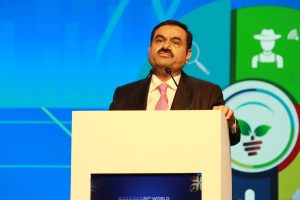I learned about the concept of chain migration from others on student visas like me soon after I arrived in the USA. Student visas had several limitations. Working off campus was not allowed. Wives of married students could not work anywhere. There was a limitation on how long we could stay abroad, and we had to get re-entry permits to come back. It was understood that we were to return to our home country as soon as our studies were completed. The coveted item was a “green card” – a document which changed the immigration status from student to a “permanent resident”. For all practical purposes, a permanent resident has all the privileges of a citizen except for voting rights.
There are several avenues to get a green card. One can convince the Immigration and Naturalization Service that one is so talented and qualified that one’s continued presence in America would benefit the country. The second path requires a potential employer to sponsor the applicant by certifying that the applicant has special skills which are rare to find. The third possibility is to marry a US citizen or a green card holder. One can also get a green card if one is a child or parent of a permanent resident or sibling of a US citizen. There are other options such as seeking political asylum and financial investment in America. One can also have a child while on a temporary visa, who is automatically a citizen by birth. The child can bring the parents back when he/she becomes an adult, a long but legitimate process. There are two groups of incoming foreign nationals; one group spends a few years to complete their mission, be it education or a temporary assignment and then goes back. They do not even apply for a green card. For the second group, a green card is just an admission ticket, not only for living in America but also for gradually bringing their entire family into the country.

It typically starts with the most qualified family member getting a student visa. He/she completes a graduate degree and starts working; changing visa status (to a permanent resident or a temporary work visa such as a J visa). Once financially established, and with a green card in hand, the person sponsors parents to come, also as permanent residents. Once the parents get used to American life and conveniences, they lobby the first child, once he/she becomes a citizen, to sponsor siblings so that they can also get immigration visas. The siblings get to America even if they do not have the necessary education and/or skill set to come on their own.
If the siblings are married and have children, their spouses and children also get to come automatically. Once the siblings settle down, they are often inclined to bring their in-laws and the cycle (or the “chain”) continues much like a chain reaction in a nuclear explosion. On the surface, this chain migration policy seems to be fair and reasonable. It is a good scenario for the immigrant, and an appropriate gesture for the host country to entice talent from overseas countries. The relatives of the first immigrant eventually all contribute to society as productive tax-paying citizens and strengthen the community. Much has been said about a “brain drain” i.e., the US is draining the collective brain power of India (and other countries) by only admitting the best and the brightest, tantalizing them with the dream of an American life. I do not subscribe to this theory. It is not the US government but individual universities and companies who look for foreign resources to satisfy their selfish and immediate needs.
They certainly do not want to hold on to these foreign employees permanently, unless they are exceptionally brilliant. It is not just Indian Americans but every ethnic group in the country that builds up in this way. The result is a rich, multicultural nation and hence the cliché we frequently hear, America is a nation of immigrants. However, not everyone is thrilled about the concept. Donald Trump considered discontinuing the policy for siblings and in-laws during his first term. He did not see the point of spending American resources to educate and develop foreign workforces when there are many qualified US citizens who are either unemployed or underemployed.
He also had a strong argument that terrorists were coming to America under the umbrella of chain migration from Middle-eastern countries. The political debate will play out once Mr Trump enters office. But I would like to point out several not so widely discussed social aspects of chain migration. First consider the potential feuds within a family itself. All the family members immigrating on the coat-tails of the first member impose both financial and social burden on the latter, at least until they can establish themselves. Subsequent members in the chain may not be geared up to be Americanized, especially if they have not gone through an educational or professional experience in the country.
They are less likely to embrace America as their own in terms of social activities, mannerisms, food and dress habits, etc. The entire extended family is then viewed as a stereotypical “ethnic” family. Families resulting from chain migration often prefer to live in communities heavily populated by their countrymen. As a result, neighbourhoods such as “China Town” or “Little Tokyo” pop up, which lead to racial segregation. Finally, elderly family members who are left behind in India can feel miserable both emotionally as well as physically, especially when they suffer from various illnesses with no one to take care of them. I am not enthusiastic about chain migration.
Perhaps I am biased because of my own experience. Perhaps I am sad because both my parents passed away without even an opportunity to visit the US. Perhaps I envy the Indian IT engineers on H1B visas who can afford to go back and forth between India and US and live a “double life” so to speak, without the need for bringing anyone here as chain migrants.
(The writer, a physicist who worked in industry and academia, is a Bengali settled in America.)












